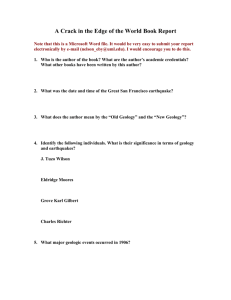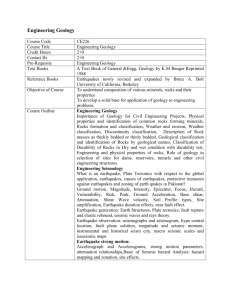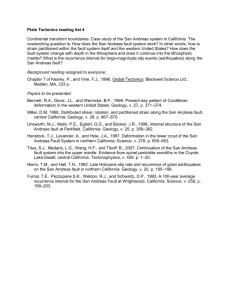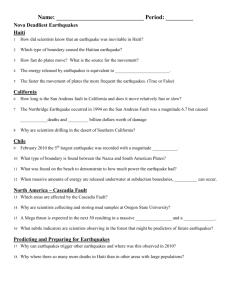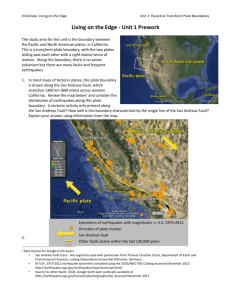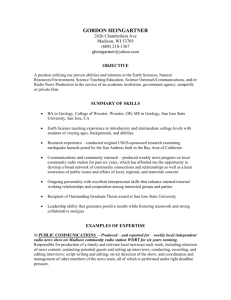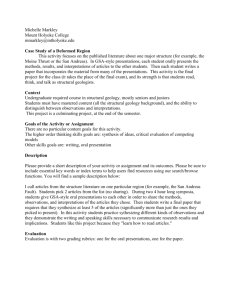geology_book_review
advertisement
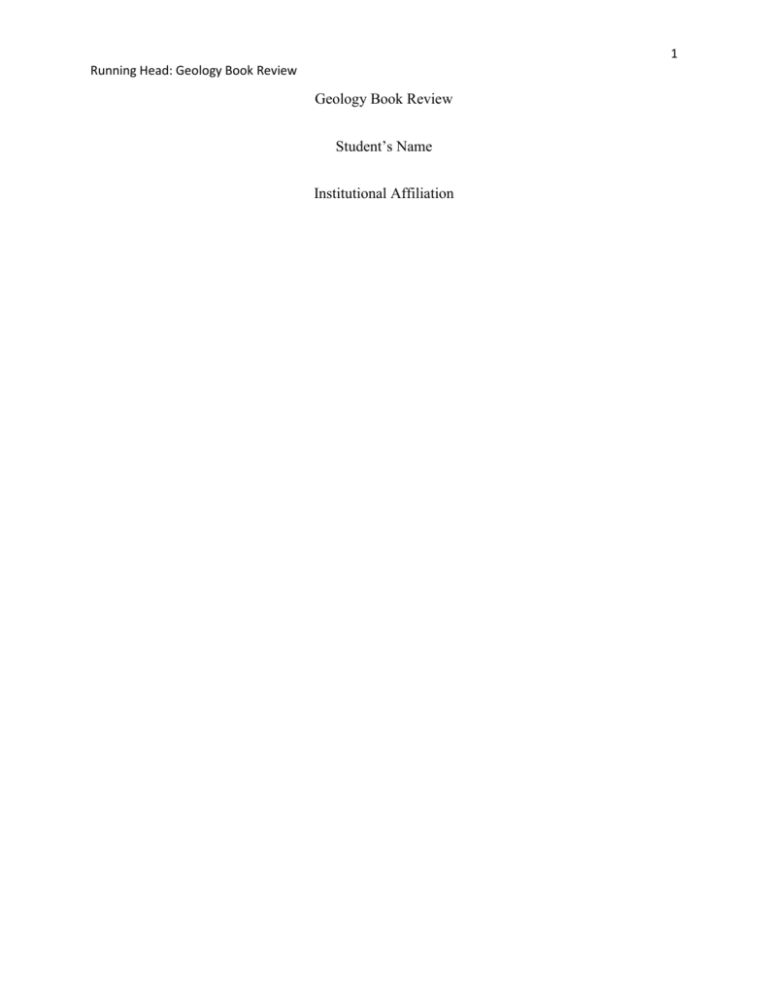
1 Running Head: Geology Book Review Geology Book Review Student’s Name Institutional Affiliation 2 Geology Book Review Abstract Geology is the study of the Earth’s structure and the natural forces that occur within it. It is a very wide branch of science. One of the forces studied is earthquake. This paper entails a review of John Dvorak’s Earthquakes Storms: The Fascinating History and Volatile Future of the San Andreas Fault. It is a well detailed summary that captures the general message intended to be disseminated in this book. I have a great passion for Geology and I am always out there looking for new books in search of new information. This is because I reside in San Andreas and I am therefore aware of what is happening around me- the frequent earthquakes. May be this is what has inspired me. John Dvorak is a veteran of the U.S. Geological Survey with a promising third career as a science writer; this is his first book. What delights me about Earthquake Storms isn't the part that its title refers to. "Earthquake storms," which were given their name in the late 1990s by Amos Nur, are a recently recognized pattern of behavior along certain large, complex faults: these faults tend to break in a series of large earthquakes over a period of decades, followed by a longer period of relative quietness. The new information that surprised me is that: An earthquake storm in Turkey started in 1939 and continues, we think, today. Another one is in progress in western China. The San Andreas is one such fault, and California is in one of those quiet periods between storms. That part of the book is sobering, and the science is too recent to be in the textbooks. I know that getting the reader to the point where earthquake storms make sense takes up almost the entire book. The average California geologist who already knows the facts about the fault may not look forward to all of that routine exposition. I agree with the way Dvorak chose a 3 Geology Book Review chronological approach to this subject that retains a flavor of discovery rather than explanation. It also allows him to deftly bring in the larger themes in 20th-century geology, such as the development of plate tectonics, that have always had some relevance, sometimes startling, to the San Andreas fault. He tells this complicated story as well as anyone has. In addition, Earthquake Storms goes into depth in several sub-topics that other books have scanted. The practice of pale seismology, through trenching studies, is one. The setting of San Andreas Fault studies is the exploration of California's geology, and this penumbra of the seismic quest is well integrated. And the shifting nature of the San Andreas Fault, which in the past has taken different paths through faults that have other names at the moment, is a topic familiar only to specialists that should be more widely known. The fault is not a simple line on the ground but rather is just one thread in a skein of related seismic activity. The aforementioned sub-topics have changed about the way I think about earthquakes. For the high-level reader, Earthquake Storms will disappoint with its lack of literature citations. There are no back notes, no list of further reading, no references at all. Even as it delves deep into the literature, the book is resolutely non-scholarly. Fortunately, anyone with moderate web searching skills can confirm the validity of its main points. This book has taught me a lot by giving detailed information in a large number of subtopics. I have learnt how various earthquake processes occur. I enjoyed reading about pale seismology as I wasn’t conversant it. I recommend that you look for this book and read it if you want to grasp more knowledge on Geology. It is simple, contains ample information and interesting. You can buy the book physically or online. 4 Geology Book Review REFERENCE Dvorak, J. (2014). Earthquake storms: The fascinating history and volatile future of the San Andreas Fault.

